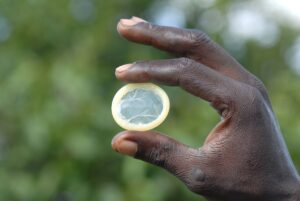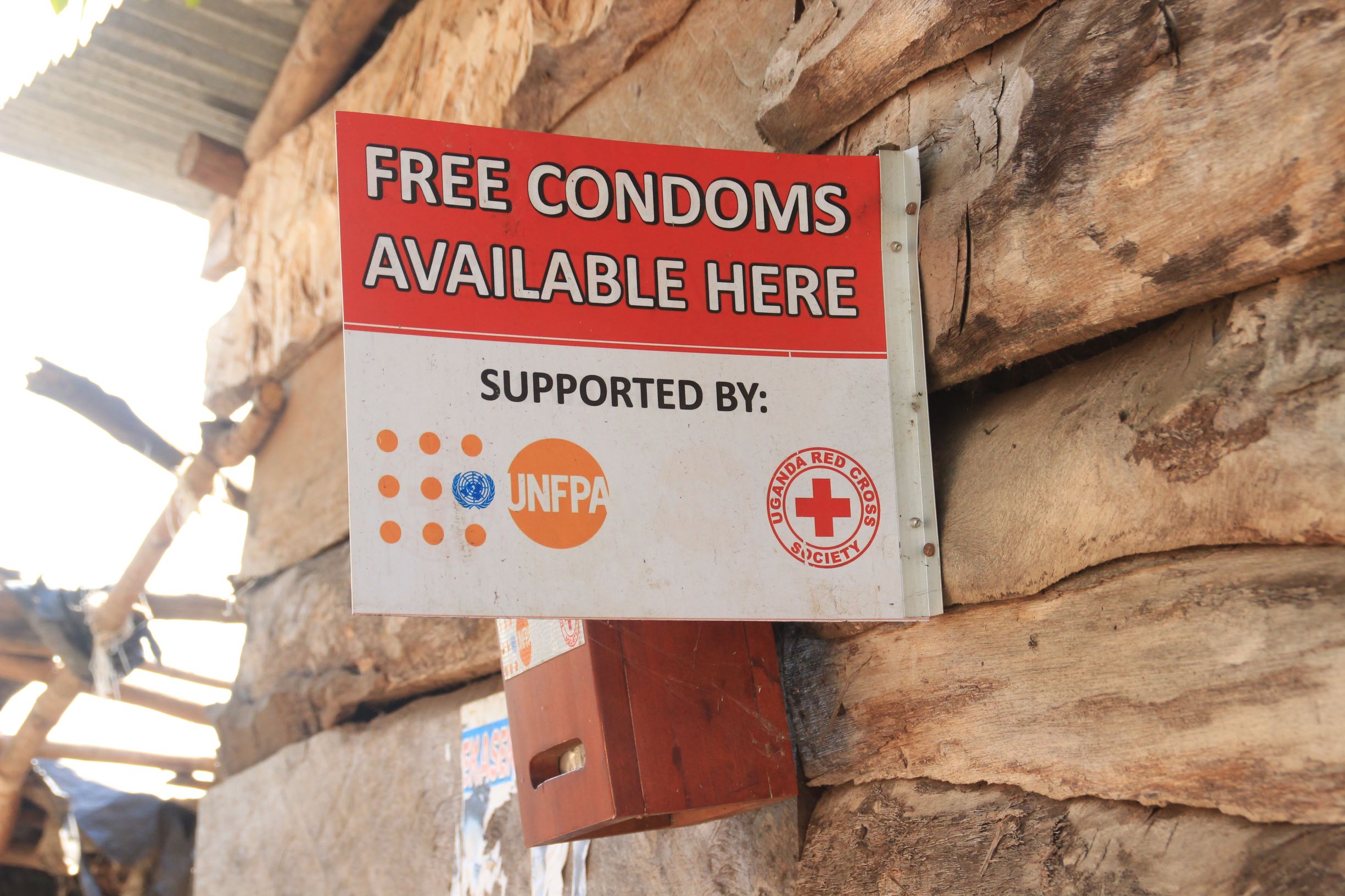How Aid Organizations’ Efforts to Provide Free Condoms Can Backfire
Written by Hannah Button, DKT Tanzania
It may seem like a simple solution to a glaring problem: Provide people with free condoms to curb HIV transmission rates and prevent unwanted pregnancies. But in Tanzania, many well-intentioned aid organizations’ efforts to disburse free or heavily subsidized contraceptives have backfired, skewing the market and jeopardizing the sustainability of such sexual and reproductive health (SRH) product provisions.
HIV transmission remains a critical issue in Tanzania, with 1.7 million Tanzanians currently living with HIV, and 77,000 new HIV cases recorded in 2019 alone. From an outsider’s perspective, the idea of dumping a massive supply of condoms into the country might seem like an adequate solution. But the complicated reality paints a much different picture of the impact of certain contraceptive donations.
A contributing factor to Tanzania’s high HIV prevalence and transmission rates lies in its complex relationship with condoms: In 2017, only 30% of women and 46% of men reported using condoms while engaging in casual sex. Stigmas against condoms, certain religious beliefs and practices, embarrassment, misinformation regarding the uses and potential side effects of contraceptives, and a political climate that has deprioritized SRH have all contributed to low condom use.
While 260 million condoms are needed in Tanzania each year, only 40-50% of that need is being met. Aside from cultural barriers to condom use, in some instances, difficulties procuring adequate supplies of condoms in-country have contributed to market slumps. Between 2016-2019, condom distribution trends declined as a result of inadequate funds in both the public and social marketing sectors, sparking concerns of an impending condom shortage.
 In such cases, aid organizations have provided support in the form of free or heavily subsidized condoms. For instance, in 2018, the Global Fund to Fight AIDS, Tuberculosis and Malaria donated 120 million condoms to be disbursed free of cost through the public sector in order to avert a national condom shortage.
In such cases, aid organizations have provided support in the form of free or heavily subsidized condoms. For instance, in 2018, the Global Fund to Fight AIDS, Tuberculosis and Malaria donated 120 million condoms to be disbursed free of cost through the public sector in order to avert a national condom shortage.
This tactic of releasing massive amounts of subsidized condoms into the market may seem like a quick fix to prevent shortages and help meet national demand. But in the long-run, such actions can act as a barrier to establishing an equitable and sustainable condom market. Studies conducted by the United States Agency for International Development (USAID), the Bill and Melinda Gates Foundation and other international organizations have all come to similar conclusions: The national condom market has become heavily reliant on subsidized and donor-supplied commodities.
Why exactly such reliance is negatively regarded has to do with a variety of factors. On first reflection, it might seem plausible that free condoms would be warmly accepted and used. After all, who doesn’t love freebies? But years of social marketing research illustrates different expectations regarding consumer behavior when it comes to condoms.
“Anybody will take something if it’s free – even if they don’t want or need it,” DKT International CEO Christopher Purdy wrote.
Research suggests free condoms are more likely to be discarded or wasted, as their perceived value is typically low due to the implication that something given away free of cost is of low quality. Contrarily, there is a higher likelihood that someone who purchases low-cost condoms will use them for their intended purpose, simply due to the fact that they spent their own money to obtain them.
“When a small price is attached to that product or service, consumers will think twice before parting with their hard earned money,” Purdy wrote. “This also increases efficiency and the likelihood of impact since there is less wastage.”
A study by Sustaining Health Outcomes through the Private Sector (SHOPS) Plus in Tanzania came to the same conclusion, finding that a majority of surveyed sexually active men considered free condoms to be untrustworthy and having lower quality, durability and lubrication, instead preferring the socially marketed, low-cost alternatives.
Apart from negative perceptions of free condoms, the presence of these subsidized products in the market, in general, is problematic when it comes to creating a sustainable environment.
 “While the market frequently fluctuates… heavily subsidized condom brands have widespread distribution across the country and in a multitude of channels,” according to the SHOPS Plus report. “This widespread availability has displaced commercial condoms by priming consumers to expect artificially lower prices for condoms, regardless of their ability to pay.”
“While the market frequently fluctuates… heavily subsidized condom brands have widespread distribution across the country and in a multitude of channels,” according to the SHOPS Plus report. “This widespread availability has displaced commercial condoms by priming consumers to expect artificially lower prices for condoms, regardless of their ability to pay.”
The big question is: What happens when current donor periods come to an end, and when free or heavily subsidized condoms are no longer available?
“The reality is, prices of condoms today reflect a skewed market where free or practically free products are available, even in areas where people can afford to pay a little more,” DKT Tanzania COO Navid Adatia said. “Once those free products are reduced, and once reproductive health funding reduces, we will see a gap in the market, and consumers will see higher prices than they’ve been used to with the subsidized condoms.”
In terms of a solution, experts believe the answer cannot be to reject free condoms and subsidized products outright. Instead, the distribution paths of these free products must be fine-tuned to reach target areas and groups of the highest risk and lowest income, who are most likely to benefit from their availability.
“By making subsidized condoms available to everyone, you’re setting the bar extremely low for the prices consumers are going to be used to,” Adatia remarked. “Instead of making these free goods available everywhere, we have to be really intentional about where they end up, and make sure that subsidized condoms, which are really only meant for the highest-need groups, aren’t ending up in shops or pharmacies in communities where people can afford the low-cost brands.”
DKT Country Director Kevin Hudson explained that it is up to the donor organizations themselves to not only research and evaluate where they send their products, but to consistently monitor real distribution paths to ensure free goods are not ending up in the wrong hands.
“This all comes down to an effective monitoring arrangement – monitoring by the donor,” Hudson said. “You also need to ensure that there is an appropriate policing system, i.e. a regulatory environment that has the manpower and resources to ensure that if they find outlets in a metropolitan area selling subsidized condoms, there should be some form of sanction.”
 As things currently stand, Hudson explained, many donors do not have the capacity to properly target their grant investments by effectively monitoring where the condoms actually end up, which has resulted in the current sustainability challenges.
As things currently stand, Hudson explained, many donors do not have the capacity to properly target their grant investments by effectively monitoring where the condoms actually end up, which has resulted in the current sustainability challenges.
“When they talk about better targeting, that needs to be defined,” Hudson said. “It’s an arduous process and one that requires public support via regulatory control, as well as from the private sector, to make sure that these subsidized condoms do not leak from the harder-to-reach areas back to cities and urban areas.”
There is no question Tanzania would benefit from increased condom use as a means of tackling high HIV infection rates and preventing unintended pregnancies. While the issue of normalizing safe sex in Tanzania is incontestably complex, it is vital that donor organizations adequately invest both time and money into the proper distribution and monitoring of subsidized condom programs. These efforts will hopefully ensure that free condoms only end up in the hands of the poorest, most at-risk groups in the country, and will help prevent perpetual damage to the national condom market. Such actions may even contribute to creating a more sustainable environment that promotes future incremental condom use.
Hannah Button is a journalist, educator and international development specialist. Her professional interests center on the use of family planning and reproductive health as tools for development. She studied journalism at the University of Southern California and received a master’s degree in International Cooperation and Development from Università Cattolica del Sacro Cuore in Milan, Italy.


